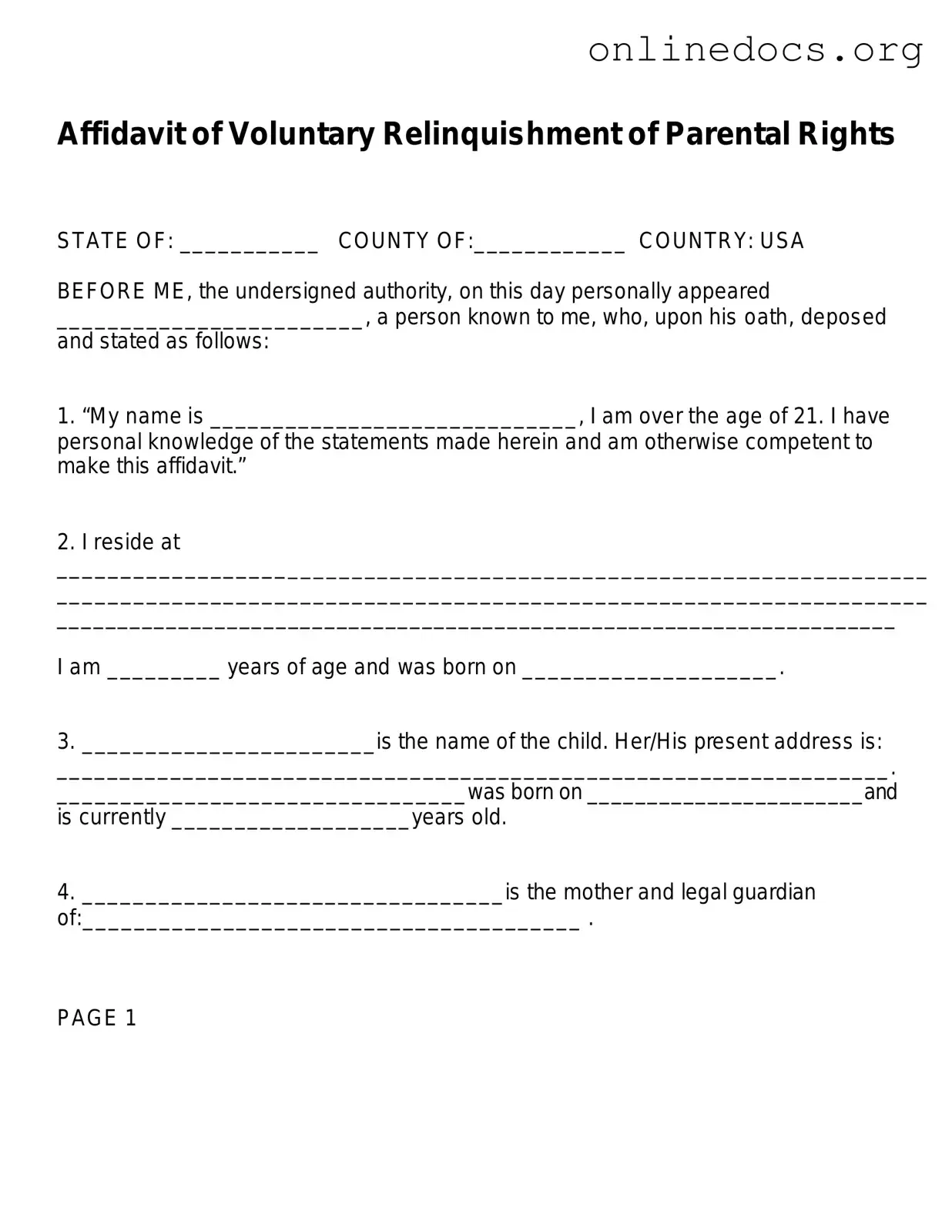Filling out the Affidavit of Voluntary Relinquishment of Parental Rights form can be a daunting task. Many individuals make mistakes that can complicate or invalidate the process. One common error is failing to provide complete personal information. It is essential to fill in all required fields accurately, including names, addresses, and dates of birth. Missing or incorrect information can lead to delays or legal issues down the line.
Another frequent mistake is neglecting to select the appropriate option in Section 5. Applicants must choose between 5A and 5B regarding their obligation to make child support payments. In some cases, individuals may inadvertently skip this section or fail to mark their choice clearly, which could create confusion about their financial responsibilities.
Additionally, individuals often overlook the importance of clearly stating their reasons for relinquishing parental rights in Section 7. This section requires thoughtful consideration and explanation. A vague or incomplete response may not adequately convey the circumstances, potentially affecting the court's understanding of the situation.
People sometimes forget to include the necessary signatures. Section 13 states that the affiant must sign the affidavit, but it is equally important for witnesses to sign as well. Missing signatures can render the affidavit invalid, leading to complications in the legal process.
In some instances, individuals may not fully understand the implications of their decision. A lack of awareness regarding the irrevocability of relinquishing parental rights can lead to regret. It is crucial to comprehend that this decision is permanent after the designated time frame unless properly revoked.
Another mistake involves failing to communicate the revocation process clearly. If an individual chooses to revoke their relinquishment, they must follow specific steps outlined in the affidavit. Misunderstanding these steps or not providing the necessary information can hinder the ability to reclaim parental rights.
Moreover, individuals often neglect to provide complete contact information for the mother or legal guardian in Section 12. This information is vital for effective communication regarding any potential revocation. Incomplete contact details can lead to further complications in the legal proceedings.
Lastly, individuals may underestimate the importance of consulting legal counsel before signing the affidavit. Seeking professional guidance can help clarify any uncertainties and ensure that all aspects of the affidavit are properly addressed. Legal advice can prevent mistakes that could have lasting consequences.
